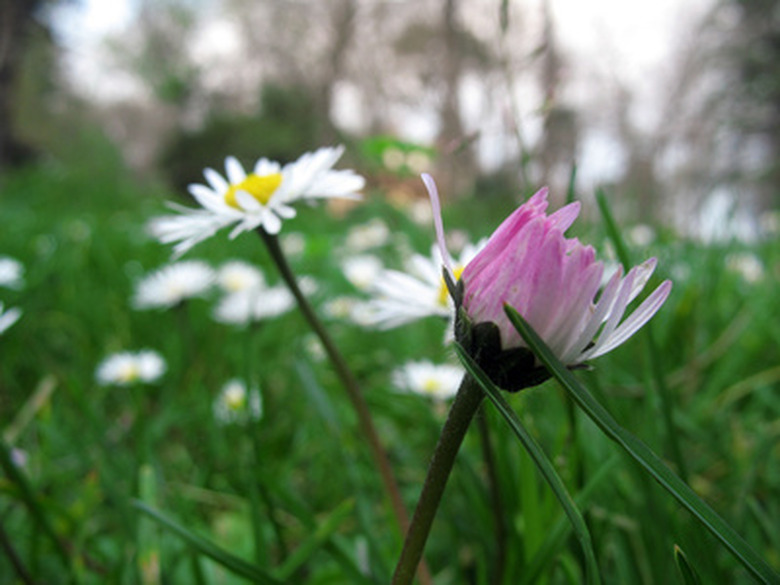List Of Non-Edible Flowers
There are both edible and non-edible varieties of flowers in existence. Some vegetables, such as cauliflower and broccoli, are technically classified as flowers. It is also common to add flower petals into salads, or to use attractive and colorful petals as decoration on a plate. Some popular examples of edible flowers include carnations, lavender, gardenias and peonies. However, on the contrary there are also many non-edible flowers that are actually poisonous if consumed.
Anemone
Anemone is also commonly known as thimbleweed, windflower and pasqueflower. Anemone is a perennial herb that comes in many colors, including yellowish-green, white, purple and red. The flowers originate in Asia, Europe and North America. All parts of the anemone, when fresh, are poisonous and therefore non-edible. If vast amounts of anemone are consumed, a person can experience severe mouth pain.
- There are both edible and non-edible varieties of flowers in existence.
- It is also common to add flower petals into salads, or to use attractive and colorful petals as decoration on a plate.
Agapanthus
Agapanthus is also known as the African lily, African blue lily and flower of love. It is part of the Agapanthaceae family. The flowers of the Agapanthus range in color from purple to blue and white. The flowers bloom starting at the end of the spring all the way to the beginning of the autumn. Their leaves are greyish or dark green and have a leathery texture. The bulb and the foliage of the plant are poisonous if eaten.
Dahlia
The dahlia is an attractive, bright flower that is part of the Asteraceae family. The dahlia is a perennial herb that has divided or pinnate leaves. Both the tubers and the leaves of the dahlia are toxic to humans. Skin that is repeatedly exposed to the dahlia can experience irritation.
- Agapanthus is also known as the African lily, African blue lily and flower of love.
- The dahlia is an attractive, bright flower that is part of the Asteraceae family.
Anthurium
Anthurium is a vibrant flower that is classified as part of the Araceae family. It is a perennial herb characterized by deep green, leathery heart-shaped leaves. The flowers can be various colors, including white and red. The plant has tropical origins. All parts of Anthurium are toxic if consumed. If eaten, the Anthurium can lead to irritation of the mouth, as well as digestive discomfort. The sap of the flower can cause eye and skin irritation.
- Anthurium is a vibrant flower that is classified as part of the Araceae family.
- The sap of the flower can cause eye and skin irritation.
